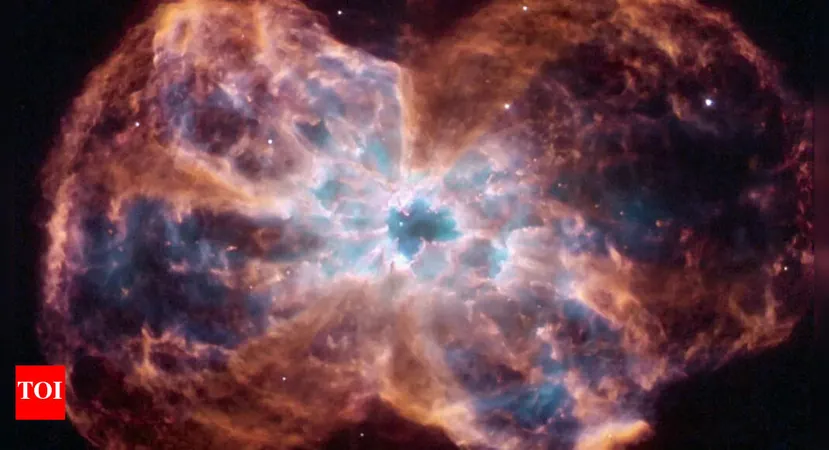
Astronomers Uncover Shocking Transformation of a Dying Star: IC418's Rapid Rise in Temperature
2025-08-22
Author: Wei Ling
An Eye on the Skies: 130 Years of Observation
For the first time in history, astronomers have closely monitored the astonishing metamorphosis of a dying star over an impressive span of 130 years. The 'spirograph' Planetary Nebula IC418, located about 4,000 light-years away, has seen its ethereal green glow intensify by an astounding 2.5 times since 1893. This vibrant light signals a dramatic temperature surge of around 3,000°C in its central star, challenging previous scientific theories about stellar evolution.
The Universe is Alive: A Journey Through Time
As we gaze at the night sky, it often appears timeless, the stars painted upon an eternal canvas. Yet, underneath this facade, the universe is a whirlwind of change. Stars experience dynamic lifecycles spanning millions of years, transforming in ways that usually elude our notice. Thanks to technological breakthroughs and historical observations, scientists have begun to capture these cosmic changes. They’ve been watching IC418 and its rapid transformation, marking the most accelerated heat increase recorded for any star.
Remarkable Findings in Stellar Evolution
Published in The Astrophysical Journal Letters, the study reveals how the once faint nebula has evolved dramatically. By analyzing records that date back to the Victorian era, researchers discovered that the bright, greenish hue of IC418—caused by oxygen atoms—has intensified significantly. In stark contrast, our own Sun, which took about 10 million years to increase in temperature by the same degree, shows how exceptional this case is.
Rethinking Stellar Lifecycles and Carbon Production
Interestingly, while IC418 is warming at an unprecedented rate, it actually heats up more slowly than current theoretical models forecast. This surprising discovery has prompted scientists to reconsider their understanding of how stars age and ultimately produce essential elements like carbon, which underpins life as we know it. Lead researcher Professor Albert Zijlstra emphasized that historical data can offer invaluable insights: “The past shows that the skies are not as unchanging as we may think.”
The Birth of a Planetary Nebula
Planetary nebulae like IC418 emerge during the final chapters of a star's life. As a star’s core destabilizes, it sheds its outer layers into space, revealing a hot core that heats up rapidly. This process energizes surrounding gas and dust, creating mesmerizing patterns like the ones seen in the spirograph nebula. NASA predicts our Sun will undergo a similar transformation in about 5 billion years.
The Fastest Stellar Transformation Ever Recorded
Typically, changes in planetary nebulae are so gradual that they remain imperceptible within a human lifespan. However, IC418's swift evolution allows scientists to document these changes in real time, categorizing it as the most prolonged and rapid stellar transformation officially observed.



 Brasil (PT)
Brasil (PT)
 Canada (EN)
Canada (EN)
 Chile (ES)
Chile (ES)
 Česko (CS)
Česko (CS)
 대한민국 (KO)
대한민국 (KO)
 España (ES)
España (ES)
 France (FR)
France (FR)
 Hong Kong (EN)
Hong Kong (EN)
 Italia (IT)
Italia (IT)
 日本 (JA)
日本 (JA)
 Magyarország (HU)
Magyarország (HU)
 Norge (NO)
Norge (NO)
 Polska (PL)
Polska (PL)
 Schweiz (DE)
Schweiz (DE)
 Singapore (EN)
Singapore (EN)
 Sverige (SV)
Sverige (SV)
 Suomi (FI)
Suomi (FI)
 Türkiye (TR)
Türkiye (TR)
 الإمارات العربية المتحدة (AR)
الإمارات العربية المتحدة (AR)